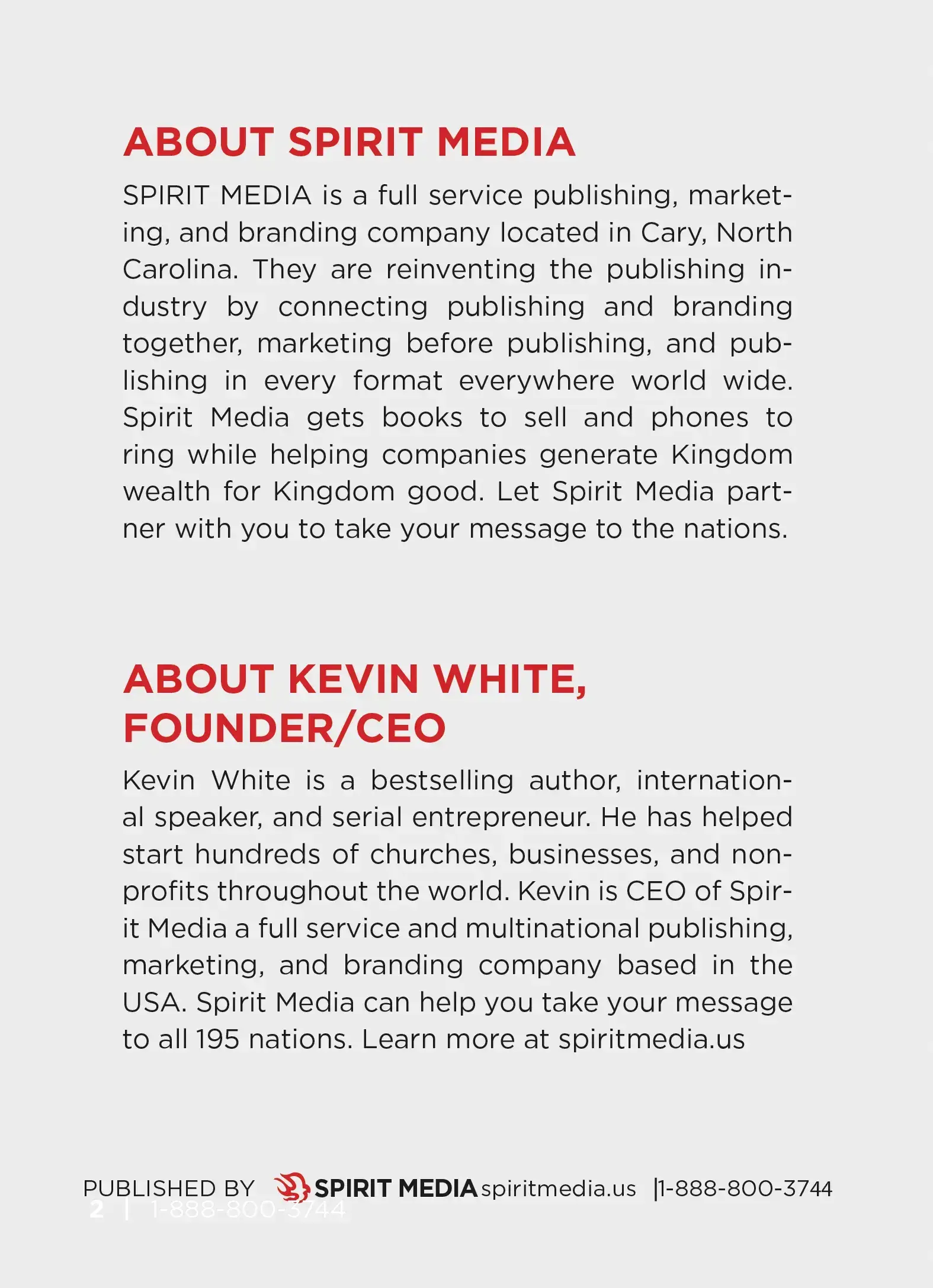How and When to Get Your Book Published: A Timeline
Meta Description: Publish your book at Spirit Media, and we’ll guide you every step of the way.
It’s a remarkable accomplishment to finish a book, but the journey does not end when the final word is written. Getting your book published is one of the most crucial steps you can take to share your story with the rest of the world. When it comes to navigating the publishing process, it can be overwhelming, but do not worry!
In this article, we will provide you with a comprehensive timeline that will guide you step by step on how and when you can get your book published. Follow this step-by-step guide to get you started on your literary journey, regardless of whether you’re a first-time author or a seasoned writer.
1. Refine Your Manuscript
It’s important that your manuscript is in top shape before embarking on the publishing journey. Make sure that you revise and edit your work diligently, seeking feedback from beta readers and writing groups in order to identify any areas in which improvements can be made.
Consider hiring a professional editor to improve your prose, clarify plot inconsistencies, and enhance the development of your characters by polishing your prose. The foundation of a successful book lies in a well-crafted manuscript that is well-researched and well-written.
2. Research Publishing Options
Explore several publishing options to find the best fit for your book. Authors have a variety of publication alternatives from which to select. Let’s look at the primary publishing options since each has benefits and things to keep in mind:
Traditional Publishing: A traditional publishing method involves submitting your manuscript to literary agents or publishing houses in order to get it published. The publisher will handle all aspects of your book’s production, such as editing, cover design, distribution, and marketing if it is accepted. In general, this method provides a higher level of credibility and a better distribution network. Still, it may take a longer time to be published and may require a more selective submission process.
Self-Publishing: With self-publishing, authors are able to publish their books independently, without the involvement of traditional publishers. There is more control over the process and more royalty rates for the authors, but they are also responsible for editing, design, marketing, and distribution of their work.
Hybrid Publishing: The concept of hybrid publishing combines the elements of traditional publishing with those of self-publishing. It’s common for authors to contribute financially to the publication process. In return, hybrid publishers are able to offer professional services such as editing and marketing assistance to the authors. Some hybrid publishers have selective submission processes, and some hybrid publishers accept most submissions.
3. Query Literary Agents (if pursuing traditional publishing)
If you’re interested in traditional publishing, compile a list of literary agents who specialize in the genre that your book is set in. You should craft personalized query letters and submit them to the agents you have chosen. It’s important to remain patient and to be prepared for rejection; persistence is one of the keys to surviving in this highly competitive field.
4. Prepare Submission Materials (if self-publishing)
When you are considering self-publishing, it’s important that you prepare your book for publication. Invest in an eye-catching cover for your book, as well as formatting the interior for print and e-book editions using a professional cover designer. Make sure your book meets industry standards by investing in professional typesetting services.
5. Determine Your Publishing Timeline
Decide on a realistic publishing deadline and stick to it. There are a number of external factors that need to be taken into account, such as book fairs, seasonal demand, or personal commitments. Make sure you give yourself ample time for editing, cover design, formatting, and marketing your book. By creating a well-planned timeline, you will be able to avoid last-minute rushes and make sure that the publishing process runs smoothly.
6. Finalize Publishing Agreement (if traditionally published)
Whenever a literary agent expresses an interest in representing your book, they will act on your behalf while negotiating with publishers on your behalf. You should carefully review the publishing agreement once you receive an offer from a publisher. Ensure the terms of the contract are fair and beneficial to your interests. If necessary, seek legal advice.
7. Self-Publish or Sign with a Publisher
As a self-publisher, you will need to follow the guidelines of the platform that you choose to release your book on (e.g., Amazon Kindle Direct Publishing, IngramSpark). You can upload your manuscript and cover, as well as the necessary metadata, and set a launch date when you are ready. In the case of traditional publishing, you will need to sign a publishing agreement with your chosen publisher, granting them the rights to publish and distribute your book.
8. Marketing and Promotion
The marketing of your book is crucial, regardless of whether you choose to self-publish or sign with a traditional publisher to reach your target audience. The marketing plan should include a mix of online and offline strategies, such as social media promotion, an author’s website, book signings, and blog tours, as well as an email marketing campaign. Build your author platform in order to promote the visibility of your book and engage with potential readers.
9. Launch Your Book
It has finally come to the big day! Launch your book with enthusiasm and excitement. Host a launch party, either virtually or in person, and encourage your followers to share the news with their friends. To generate initial buzz and increase sales, use pre-orders and limited-time promotions.
10. Seek Reviews and Feedback
In the course of your book’s development, you should actively seek reviews from readers and book bloggers. If you receive positive reviews, you will build credibility and boost sales, whereas if you receive constructive feedback, you will be able to improve your future writing efforts.
11. Engage with Your Audience
Take advantage of social media, newsletters, and book clubs to interact with your readers. As you engage with your audience, you are not only able to better understand their preferences but also cultivate loyal fans who are eager to see what you will produce in the future.
12. Evaluate and Adapt
Once your book has been released into the world, you should monitor its performance on a regular basis. Analyze the sales data, marketing efforts, and feedback from readers in order to improve your product. Make a list of areas where you can improve and apply these insights to your future writing and publishing endeavors in order to succeed.
Conclusion
Putting your book on the market is an exhilarating, rewarding experience that demands a great deal of determination, perseverance, and a well-planned and well-executed strategy. Having this comprehensive timeline on how and when to get your book published will provide you with the information you need to navigate the publishing world successfully.
It’s important to remember that every author’s path is unique, so stay true to your vision and don’t be afraid to adapt along the way to suit your needs. The choice is yours, whether you choose traditional publishing or self-publishing, but trust in your writing and let your words inspire readers around the world.
At Spirit Media, we understand the significance of your literary journey. Whether you are just getting started with your book or you are a professional author who wants to make your publishing dreams come true, we will guide you every step of the way.




